DJI Air 3 In-Depth Review
- Kent Shore

- Mar 17, 2024
- 19 min read
DJI announced mid-2023 and released the DJI Air 3, the successor to the Air 2S, and the ‘middle-child’ of the core DJI 3-series lineup. This drone is meant to be a slot below the Mavic 3 Pro price/feature-wise while being higher-end than the Mini 3 Pro. In doing so, it includes the vast majority of the Mavic 3 series features, while being largely a step up in minor features compared to the Mini 3 Pro. In other words, it makes for a complicated buying decision tree.

The biggest addition for the Air 3 is that of the new secondary tele/zoom lens, which is a 70mm equivalent lens (compared to the 24mm main lens). As was the case on the Mavic 3/3 Pro, this has quickly become my favorite lens – especially since the resulting image quality coming out of it has been virtually identical to that of the Mavic 3 Pro lens. Likewise, the main camera also got a spec boost, going from f/2.8 on the Air 2S, to f/1.8 on the Air 3. With a drop in the total resolution, which was 5.4K on the Air 2S down to 4K on the Air 3. On the flip side, we got much higher slow-motion speeds/resolutions that weren’t there on the Air 2S.
In any case, let’s dive into it!
Oh, and as usual, this review isn’t sponsored. I’ve been using the Air 3 in the past 6 months to put through its paces, and overall I love this drone, cost vs features. I’m gonna call it like it is – both the good and the bad.
WHAT’S NEW & PRICING:

The DJI Air 3 is mostly a solid upgrade over the Air 2S, but in some cases, it won’t be as obvious. It’s one of those upgrades that if you look at something like resolution, you’ll cock your head sideways for the clear resolution downgrade yet when you approach every other aspect of the aircraft, it’s a big upgrade. The resolution going from 5.4K to 4K isn’t a big deal given the new secondary optical zoom lens gives you native 4K, thus, in effect, giving you greater resolution than if you were to crop into that 5.4K image. Anyways, more on that later in the photo section.
Here’s what’s new compared to the Air 2S:
– Added secondary tele (3X) f/2.8 lens, with full/all resolutions and feature support
– Main camera increases from f/2.8 to f/1.7 (better low-light performance)
– Main camera decreases resolution goes from 5.4K/30FPS to 4K/60FPS
– Main camera goes from 1” sensor to 1/1.3”
– Slow-Mo options increase, 4K from 60FPS to 100FPS, and 1080p from 120FPS to 200FPS
– Increased photo size from 20MP to 48MP
– Increased panoramic photo size from 8192×4096 to 13000x6500px
– Increased gimbal arrangement to allow from –90° (straight down) to beyond 0° (flat) to upwards 60° (max previous 24° on Air 2S)
– Added sorta-vertical shooting mode (doesn’t rotate gimbal, just crops)
– Added/supported 10-bit on the secondary lens
– Decreased Hyperlapse mode on Air 2 from 8K to 4K
– Added/included support for Hyperlapse mode on the telecamera
– Added Waypoints feature (pre-planned and repeatable flight routes)
– Increased claimed max flight time from 31mins to 46mins
– Added additional obstacle avoidance sensors, now full omnidirectional avoidance (previously no sideways avoidance)
– Added/changed to APAS 5.0 from APAS 4.0 (automated flight system)
– Added support for all FocusTrack modes (ActiveTrack/Spotlight/POI) on BOTH lenses at full resolutions/FPS (previously only 30FPS)
– Added ActiveTrack 5.0 features like one-tap configurable angle of filming
– Added/changed to O4 transmission type from O3
– Increased range to 20KM (FCC), 10KM (CE/EU), 10KM (China), 10KM (MIC)
– Increased controller streamed FPS from 1080p/30fps to 1080p/60fps
– Doubled the controller video streaming bitrate from 16Mbps live video to 80Mbps
– Increased max speed slightly from 19 m/s to 21 m/s (75.6kph)
– Increased official wind resistance spec slightly from 10.7 m/s to 12 m/s
– Aircraft weight increases from 595g to 720g
– Charger supports USB-C 90w fast charging (60 mins)
– New Charging hub can take three partially charged batteries and give you one full one (when not plugged in)
– Aircraft has EU/CE C1 label/sticker on the bottom
– Maintained internal 8GB storage (expandable to 512GB with microSD card)
Got all that? Good. Let’s do a quick spec dump. The TLDR message here on specs is that the two camera lens systems are considered equal in virtually every mode/capacity/resolution, the singular exception being the main lens is f/1.7 and the tele is f/2.8. That won’t matter at all during daylight hours but will be more noticeable as daylight fades, as an f1.7 lens will handle darkness better. I practically have lived on the tele Zoom lens here, it’s just awesome. It makes it SO MUCH better to use the drone, and to be a good ‘drone neighbor’, by allowing you to be further from people and obstacles, while arguably getting more interesting shots (and certainly safer shots in most cases, especially for Active Track).
Pricing - here’s the details:
DJI Air 3 with DJI RC-N2: $1,099
DJI Air 3 Fly More Combo (with DJI RC-N2): $1,349
DJI Air 3 Fly More Combo (with DJI RC 2): $1,549
DJI RC 2 (just remote): $369
DJI Air 3 Battery Charging Hub: $79
DJI Air 3 Intelligent Flight Battery: $159
In the combo: Drone, 3 batteries, remote controller, extra props, charging hub
Notably, if you want the DJI RC you need to buy the combo pack. Or, buy the two pieces individually, which at that price point ($1,468) means you should just pay the extra $81 to get the two extra batteries, extra props, bag, and charging hub. In other words, DJI is shifting back to what they used to do, where the combo made a ton of sense. Whereas in the last few years, it didn’t make much sense to purchase for most people. And since the Air 3 isn’t compatible with any other past controllers, you HAVE to get a controller here.
TECH SPECS:
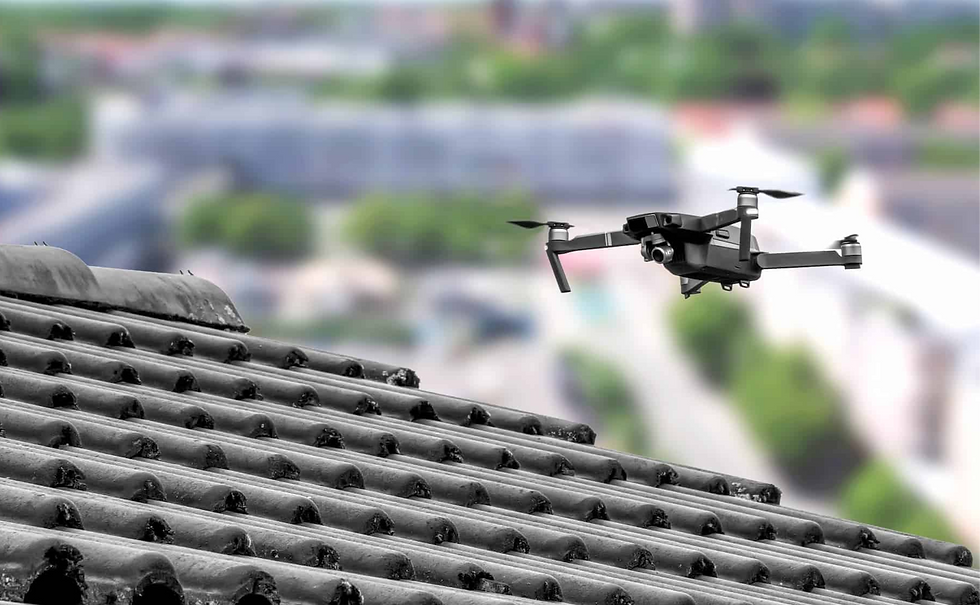
Starting with the two camera systems, or lenses here are the details:
Main Lens: This is an 82° FOV equivalent to a 24mm lens, at f/1.7, ISO 100-6400, 12,800 for night
Tele Lens: This is a 35° FOV equivalent to a 70mm lens, at f/2.8, ISO 100-6400, 12,800 for night
Note that on ISO, the max for ‘Normal’ shooting mode is 6400, D-LOG M is 1600 and HLG is 1600.
For the most part, both lenses are identical in terms of features, which is notable as many past dual-lens DJI products give lesser features/specs to the secondary zoom lens. Both night and slow-mo modes are supported equally on both lenses. Here’s the core resolution and related specs:
Wide-Angle Lens:
Formats supported: H.264/H.265
4K: 3840×2160@24/25/30/48/50/60/100*fps
FHD: 1920×1080@24/25/30/48/50/60/100*/200*fps
2.7K Vertical Shooting: 1512×2688@24/25/30/48/50/60fps
FHD Vertical Shooting: 1080×1920@24/25/30/48/50/60fps
Normal: 8-bit 4:2:0 (H.264/H.265)
HLG/D-Log M: 10-bit 4:2:0 (H.265)Still photography resolution: 8064x6048px
*FPS is only supported in H.265 format
Tele Lens:
Formats supported: H.264/H.2654K: 3840×2160@24/25/30/48/50/60/100*fps
FHD: 1920×1080@24/25/30/48/50/60/100*/200*fps
2.7K Vertical Shooting: 1512×2688@24/25/30/48/50/60fps
FHD Vertical Shooting: 1080×1920@24/25/30/48/50/60fps
Normal: 8-bit 4:2:0 (H.264/H.265)
HLG/D-Log M: 10-bit 4:2:0 (H.265)
Still photography resolution: 8064x6048px
*FPS is only supported in H.265 format
On the photo-spec side, both lenses are 100% identical for stills (note that panos and such are done on the main lens):
Single Shot: 12 MP and 48 MP
Burst Shooting: 12 MP, 3/5/7 frames; 48 MP, 3/5 frames
Automatic Exposure Bracketing (AEB): 12 MP and 48 MP, 3/5 frames at 0.7 EV step
Timed: 12 MP, 2/3/5/7/10/15/20/30/60 s; 48 MP, 5/7/10/15/20/30/60s
Photo Formats: JPEG/RAW (DNG), either singular or concurrent
On the controller side, you’ve got two options: The all-in-one DJI RC 2, or the phone companion DJI RC-N2. More annoyingly/importantly though, no existing/past DJI controllers are compatible. That’s right, the barely one-year-old DJI RC is not compatible with the Air 3. Nor is the DJI RC Pro. Inversely, the DJI RC 2/N2 is not compatible with any other DJI drones. I think DJI missed the mark on this one.
The biggest thing to note about the new O4 on the DJI RC2 & DJI RC-N2 is a huge bump up in real-world range on the European side (CE specs).
But with O4 on the DJI Air 3 and the new controllers, I’ve had zero drop-outs. Previously I’d easily drop out at 1,000m or so – but now I’m able to go well beyond double-that before I turn around to maintain visual contact. For North American folks under FCC rules, you didn’t likely have many issues previously, as the transmission power was higher there. The current specs here are:
20KM (FCC), 10KM (CE/EU), 10KM (China), 10KM (MIC).
DJI classifies the entire world into one of two buckets: FCC rules or CE rules, and those are automatically enforced based on where the aircraft is, not where it was bought. So if I take an aircraft I bought in Amsterdam to the United States, it gets more range under FCC rules (as transmission power changes), and vice versa. Unfortunately, I’m not aware of any DJI site that lists which countries fall under which bucket..
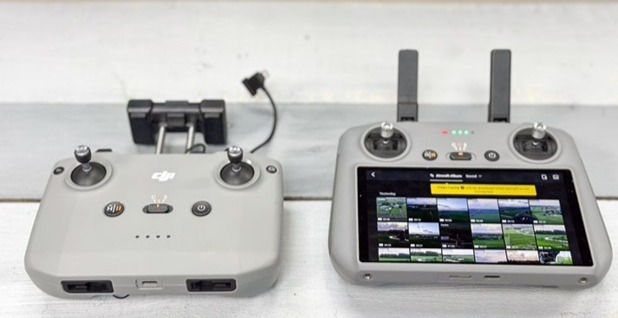
Long story short, the range is a heck of a lot better now. Yet, at the same time, I’m incredibly disappointed that the DJI RC I bought a year ago is useless with this. The ENTIRE POINT of DJI switching to controllers like that was to have a multi-year cycle of supported aircraft, not barely a year. Further, the same is true of the DJI RC Pro. Sure, that’s two years old now, but at the same time, it’s taken DJI an incredibly long time to support new aircraft with it. That too is now useless. That means if I want to go somewhere with the Mini 3 Pro (for cases requiring a lighter aircraft) and also the Air 3 (for better lenses), I need to take two controllers. Likewise, since there is no DJI RC 2 Pro, people who need some of those features (like HDMI out or 3rd party apps, etc…) can’t use the Air 3.
Sure, I get that in a year or two there will be a Mini 4 Pro and a Mavic 4 – and they’ll all probably work with this. But I also refuse to believe DJI couldn’t have at least added backward compatibility here. I’d have no (major) problems buying a new RC 2 controller but would prefer it supported the Mini 3 Pro and Mavic 3 series. Hopefully, this is something they will consider for the future (especially something like a future DJI RC 2 Pro, that has back-unit capability) because these will cause people to stop recommending the nicer controllers since the lifespan is effectively just one product.
AIR 3 HARDWARE USAGE BASICS:
Let’s start with the hardware side and some basics. For European users, the first thing you’ll notice is the C1 label already on the bottom. And for the US folks, you’ll have Remote ID built right into the unit which provides you great situational awareness of any close manned aircraft near the drone.

Meanwhile, the biggest notable new feature on the Air 3 is the new obstacle avoidance sensors. The previous Air 2S had front/rear/up/down obstacle avoidance sensors, but not sideways (lateral). The Air 3 solves that by positioning four obstacle avoidance sensors on the corners, which form a 360° view of things around it. You can see the two front ones here:

And then the rear ones below. Again, these also cover the sides and up portion:
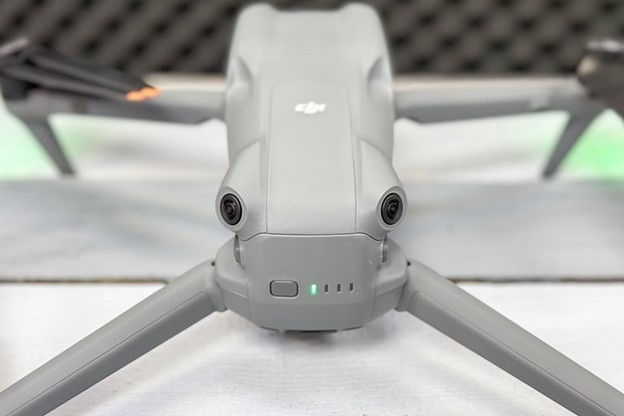
This is supplemented by downward vision, and ground detection sensors, which help it when close to the ground, as well as a bottom light, to help landing in low light conditions.
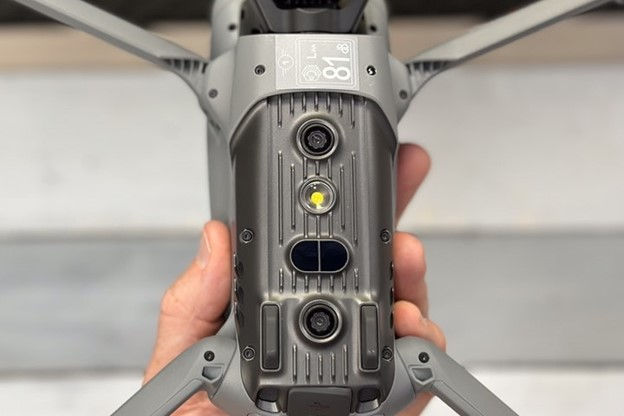
On the rear of the drone, on the battery itself, you’ve got the power button and battery status lights. You’ll also use the power button for pairing the remote, or your phone.
Below that is the MicroSD card slot and USB-C charging port:
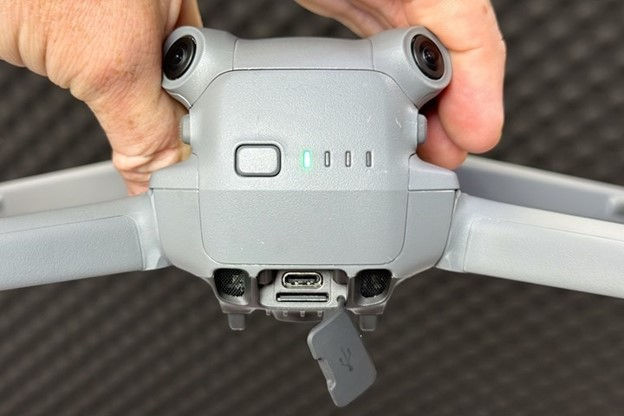
The drone batteries can be charged directly in the drone using a USB-C power cable (60w or higher, 90w or higher if you want 1-hour charging times), or they can use the charging hub noted below.
On the front of the drone is the gimbal. You’ll see the two lenses clearly labeled, this gimbal has a larger mechanical and controllable range than the previous Air 2S. On the mechanical range, that helps in strong winds or scenarios where the drone is tilted but the camera gimbal can remain level. On the controllable range, you can now use this to tilt upwards to 60° (versus the previous 24° on the Air 2S). That’s useful for doing shots like pointing up at the top of a skyscraper/tree/etc, then ascending above it while tilting down.

As usual, never touch the gimbal while powered on. When unpowered it’s fine to touch it gently. There is a plastic gimbal protector to protect the gimbal during travel. Always use it. Just like DJI’s battery charging hubs, every single version is different, and this is probably the best and easiest one to use to date. Some of them have been super finicky, but this one is actually really clear and snaps easily in place.
In terms of folding, like all consumer DJI aircraft, the arms fold back towards itself. Still, the weight is 720g, and the size is workable, a little smaller than the Mavic 3 PRO.

Mini 3 Pro at left, Air 3 in the middle, and Mavic 3 Pro to the right)
You can stick the DJI RC 2 controller in a thin/small fabric bag just so it doesn’t get all scratched up. Or as I do, use a small hard case to transport all the batteries, controller, and aircraft all together.
The RC-N2 remote compared to the RC 2 remote is very similar to the DJI RC 1, except that it now has two external antennas. Here you can see the DJI RC-N2 at left, and RC 2 at right:

On the back, you’ll see they moved the cooling vent placement slightly, and – most annoyingly, changed the two screw locations in the middle. These screw locations were used for 3rd party mounts to hold the remote on a bike. These screw holes moved about 1mm wider. Yes, just 1mm.

DJI says they made the processor faster in the DJI RC 2 as well, though I haven’t seen any meaningful impact of that. The old ones worked fine for me. The display nits are the same at 700 nits, less than the 1,000 nits seen on the DJI RC Pro. Practically speaking, I haven’t had any major issues there in bright sunlight. While your phone does have a much higher nits value, that’s only when it’s not overheating. On a hot sunny day (where nits matter), once you stick your phone in something like the DJI RC-N2, it’ll quickly get into a thermal condition that lowers the phone display nits to the same level as the DJI RC 2. Thus, a wash.
Note they got rid of one of the two USB-C ports, which served no consumer-facing purpose anyway.

The biggest drawback is that the new controller isn’t compatible with any other DJI aircraft to date (and DJI says that’s a hardware limitation), and inversely, all previous DJI remotes (including the fancy DJI RC Pro), do not work with the DJI Air 3.
The only other remote that works with the DJI Air 3 is the also-newly announced DJI RC-N2, which you use your phone with:

In my testing of the two remotes, I found the DJI RC 2 easily beats the range of the DJI RC-N2. I never got low-signal issues on the DJI RC 2, but I am getting low-signal in the 1,500-1,600m range on the RC-N2 with the Air 3 (in clear/open conditions).
Finally, as for battery life, DJI claims up to 46 minutes of flying time. While I’m sure they managed to get that time in the windless environment. I normally get between 30-35 minutes of flight time, and I am always flying in windy conditions on the Gulf Coast.
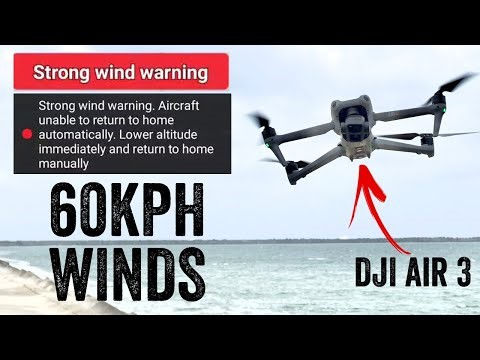
As I said I normally get 30-35 minutes of battery time before a forced landing around 10% battery remaining. Keep in mind that when recording video, you burn battery far faster than no-video (such as taking photos). In fact, as a tip – if you’re running tight on battery life trying to get back, always stop recording, you’ll see a huge bump in battery burn rate.
THE CHARGING HUB:

Now, just a quick word about the charging hub, since it doesn’t fit anywhere else. First up, with each successive drone, DJI gives us new batteries. Some day, we’ll get the same batteries for more than one series of drones. However, despite that – they are getting better and better each time with their charging hubs. Sure, it’s taken a decade, but this new one is by far the best. To begin, it can leverage 100w charging (USB-C), thus you can charge each battery in 60 minutes, which I’m happy with. And because it’s USB-C, you can use your laptop to do so. Though, I do suggest getting the DJI 100w (dual-USB-C) charger as well:

Second, and most interestingly, if while not connected to power (such as hiking or something), you double-press the charging hub button, it’ll consolidate the juice from the three batteries into one. Thus, if you’ve got three batteries at 25% left, it’ll consolidate that into one battery at ~75%. That’s awesome! That almost makes me tempted to drag this thing on treks because I always end up with multiple 15-25% batteries that are kinda useless.
Lastly, as with the past, you can plug other things into it, and use it as a monster USB-C battery bank.
About the only thing I wish this did was concurrently charge batteries as long as you had a big enough power supply. Today, it’s still successive – it charges the highest charged battery first - one battery after another. But there are plenty of higher-wattage chargers (especially in this day of higher-powered USB-C laptops, that could easily take advantage of that. Still, this is by far the best charging hub DJI has made to date.
VIDEO & PHOTO FEATURES:
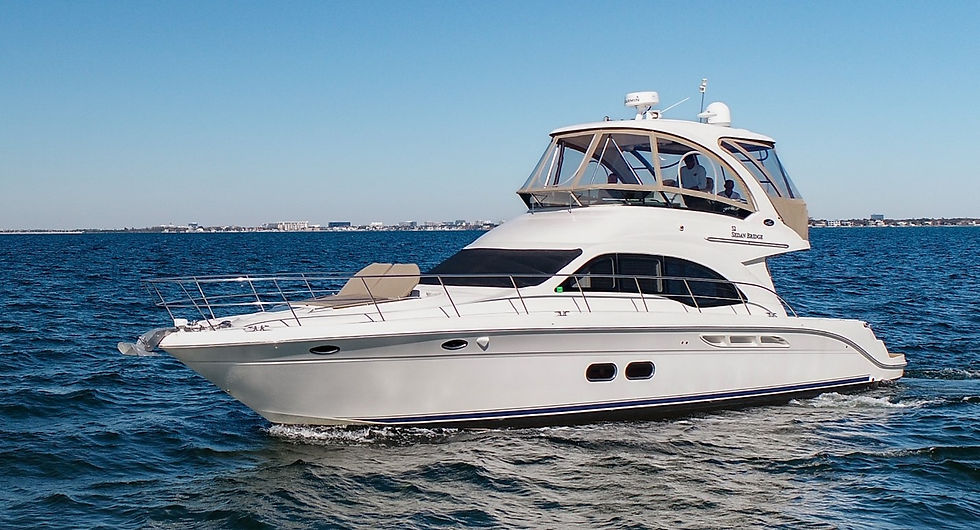
The Air 3’s two cameras are undoubtedly a selling point, as is the increased aperture of the main 24mm lens, from F/2.8 down to F/1.7. The secondary 70mm lens has an F/2.8 aperture. Both are static.
Much will be made about the shift from a 1” sensor in the Air 2S to a 1/1.3” sensor in the Air 3. The sensor size is merely one component of a modern imaging pipeline. We’ve seen countless examples of cameras that perform better than 1” sensor cameras, and vice versa, and I do agree I am getting better pictures with this sensor. One only needs to look at some 1” action cameras that have produced lesser images than that of a non-1” camera. The newly generated stacked sensor CMOS of the Air 3 also provides higher megapixels.
We need to look at the actual end results to decide whether the imagery is good. In fact, in some of my testing – specifically low-light testing, the Mavic 3 Pro and Air 3 Pro were not only indistinguishable but the Air 3 shot better shots on both the 1X and 3X. Again, because the Mavic 3 Pro is just a Mavic 3 in terms of imaging pipeline technology, and that pipeline is now nearly two years old.
Once the drone is up in the air, you’ve got a menu on the right side with the different shooting modes. This is separated into photo and video, plus various special modes like QuickShots, Mastershots, Hyperlapse, and Pano

Resolutions are controlled down in the lower right corner. Beware that by default you’ll be 1080p, so get yourself quickly to 4K. Likewise, for photos, it’ll default to shooting in 12MP, rather than the 48MP option. The Air 3 will use a mosaic algorithm for the photo side, akin to what many mirrorless cameras use.
With the Air 3, you’ve got up to 200FPS for 1080p slow-mo, and 120fps for 4K slow-mo. However, the most noteworthy is that these are available across both lenses. Again, that’s a huge shift from past DJI products where the secondary lens always got sloppy seconds. The only thing you can’t do on the second lens is shoot a panorama from it, which would be cool and perhaps down the road (you could, of course, still manually/painstakingly shoot it and stitch it later).
As with other DJI products, you can manually change photo and video settings by tapping the icon in the lower right corner. The Air 3 lets you change white balance, aspect ratio, photo format (JPEG, RAW, or both), ISO, Shutter speed, and EV comp. However, you cannot change the aperture. Likewise, for those who want to color grade themselves, you can use D-Log M, which is accessed through the camera menu in the upper right corner (the same place you’d change from 12MP to 48MP). But nothing is a surprise here in terms of DJI features – it’s all been seen before on previous drones, including the Mavic 3 series and even the Mini 3 Pro.
Unsurprisingly, I found myself gravitating back to the 70mm lens over and over again. I think for two reasons. First, the image quality is great – especially in daylight. But more importantly, it lets me get better shots. The reality is that when you stick a camera hundreds of feet up in the air, the wide-angle look can become boring and repetitive. Most shots lack something to draw the eye towards. Whereas when you get a zoom lens involved, you can start to develop foreground/background interest (even if the blur here is minimal). You can get a safe distance away from people/obstacles while still getting fascinating shots. For example, tracking boats out in a harbor, or roof Inspections, doing so with a zoom lens is just much safer, and also more friendly for uninvolved people. It also greatly reduces drone noise for those nearby.
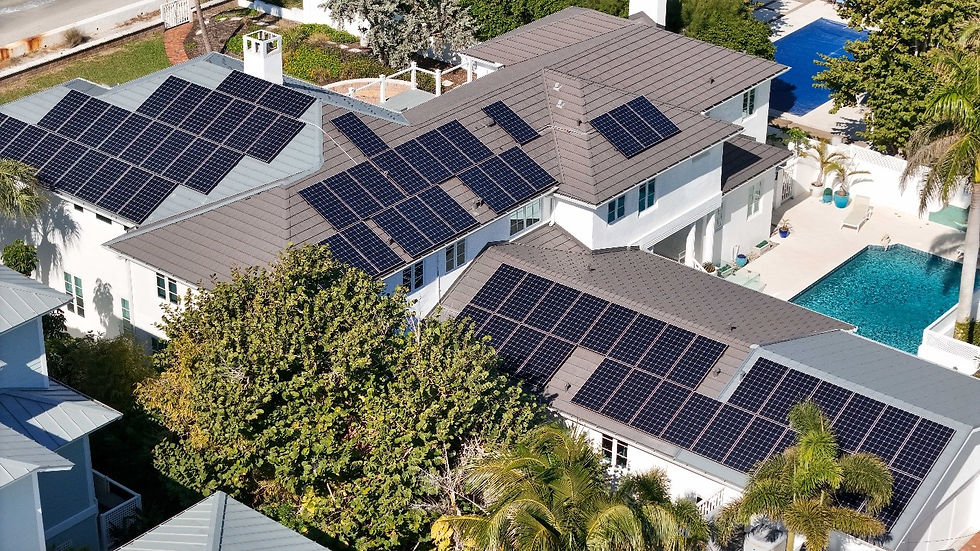
However, one downside compared to the Mini 3 Pro is that the gimbal doesn’t turn sideways/vertical for a 9:16 photo. Thus while it does have a 2.7K vertical shooting mode, it’s simply a crop from the horizontal image plane. DJI does give you the full sensor height though, so you do get a tiny bit more out of it, but it’s nothing compared to the full 4K shot on the rotated gimbal on the Mini 3 Pro.
I just wish for a day when we get this camera into the drone size of a Mini 3 Pro, with a rotating package. Perhaps someday.
ACTIVE TRACKING:
The single biggest item with the Air 3 is that it now supports omnidirectional obstacle avoidance. Previously the Air 2S lacked sideways obstacle avoidance, which meant that when it flew sideways tracking you, or if trying to avoid an object, it might go sideways, it could whack into something. And by ‘could’, I mean ‘most definitely will’. However, the Air 3 now has full coverage in every direction with newly added sensors. These should keep it safe, at least in most conditions. I suspect winter low-light conditions with thin tree branches will still be challenging...
Now, the second biggest item, and arguably almost as important, is that the Air 3 supports using the tele lens in Active Track. This means that you no longer need to be as close to the person that you’re tracking. This is incredibly useful because it can get you away from problematic objects (trees), or even away from people. It’s super useful for side-profile shots, especially low ones because you can be substantially farther away with the 70mm lens than the 24mm lens.
And the third most notable thing is that you’ve now got ActiveTrack 5.0 related functions. So sure, there’s the better object recognition and recovery, but also the ability to insta-select which filming angle you want (e.g., left/front/angled/etc…). Previously it was just back/side, and to get different angles you had to manually shift the aircraft.
Oh, and finally, you can film in 60FPS with ActiveTrack, which you couldn’t do previously on the Air 2S. Likewise, you can enable 10-bit via DLOG M, as well as any other feature you darn well want. Everything is supported in ActiveTrack modes.
Once you’ve done that, it’ll pop-up the FocusTrack menu. This menu gives you three core features: ActiveTrack, Spotlight, and POI. The differences are as such:
ActiveTrack: This is the main mode where the drone will follow you, at a preset angle (e.g., behind/side/left-back/etc…), and you can adjust height/distance in real-time.
Spotlight: In this case, the drone’s camera will follow you, but the drone will stay put. Think of this like a stadium TV camera, following the action, but staying on a tripod. This is a great way to get varying shots for a B-roll.
POI: In this mode, it’ll circle the subject (either going left or right), but, and here’s the big piece: It’ll still follow you! This is awesome if you’ve got a big wide-open area, and can just let it slowly (or not slowly) rotate around you.
Now, if you’re free and clear of objects to avoid, then the DJI Air 3 ActiveTrack is pretty darn solid. It never loses the subject in this mode, even with light tree coverage. Easily tracked the entire time, and when I’d go behind trees, it’d also pick me back up again, as long as the gap was under a few seconds.
However, in areas of denser tree coverage, the Air 3 struggled. (I suspect winter with thin tree branches would end differently). Instead, the core issue was hesitancy. The DJI Air 3 is simply far too conservative/hesitant around trees, and when it got within a few meters of any trees (or the ground), it would slow to the speed of a walk. Thus making it impractical for anything but walking (again, if near substantial tree/obstacle coverage).
Now, that said, what can help substantially here is the 3x lens, because it can get you ‘out’ of the obstacle range – especially when shooting from the side where you may have a row of trees/etc and can get beyond that, such as this path here:
In that scenario, you’ll now be clear of the obstacle and can go pretty fast. Mind you, you need to get the aircraft in ‘Normal’ mode and not ‘Sport’ mode, at least if there’s any chance of hitting anything (sport mode lets you go up to 75KPH). That’s because in sport mode there is NO OBSTACLE AVOIDANCE, thus it’ll happily plow into that tree. However, if you’re out in the ocean/lake/whatever, then that’s not a problem. I used sport mode with ActiveTrack and the 3X lens to track a waterskiing or yacht, for example:
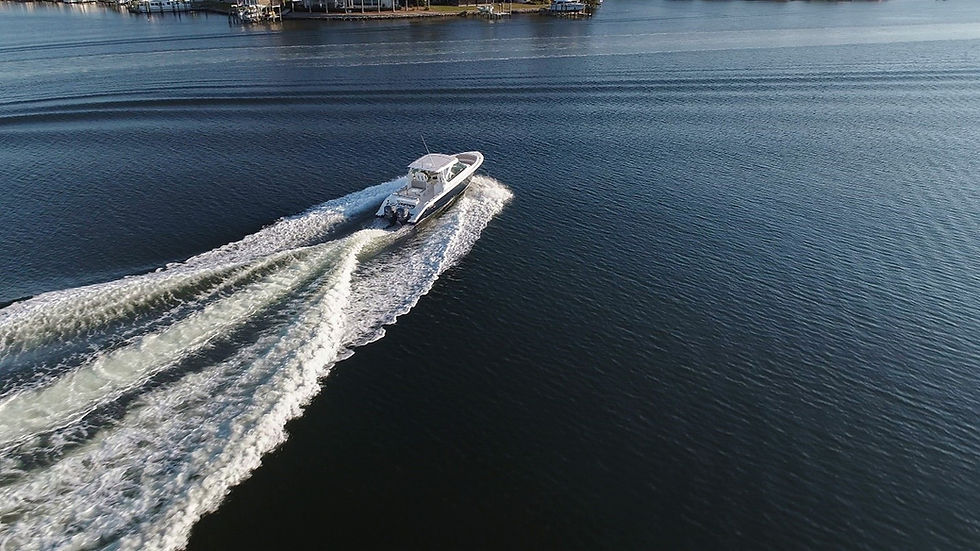
Worked great! I could have gotten in quite a bit closer, but given I didn’t know the people, I didn’t want to be super creepy. A resulting snippet from the 4K video file. I do find that the Air 3, like the Mavic 3 Pro, tends to struggle a bit with exposure near the wake of boats on bright days.
Ultimately, the ActiveTrack on the Air 3 is a modest upgrade, mainly due to the added ActiveTrack 5.0 features (previously found on the Mavic 3) in conjunction with the tele lens. However, the object avoidance speed/system still falls far short of what Skydio offers or has offered on even their oldest models.
Either way – ActiveTrack is great in light coverage or moderately open environments, getting you easy-to-manage awesome shots. Just don’t expect it to work well in dense trees. And as always, please don’t use ActiveTrack in busy areas around others (like around cars on public roads).
SUMMARY:

The DJI Air 3 is a modest upgrade in some categories, a major upgrade in others, and a slight downgrade in a few. It depends on which perspective you’re coming from, or rather, which drone you’re coming from. For an older unit like the DJI Air 2 or Air 2S, the obstacle avoidance and battery life is a big step up. Likewise, having a secondary lens is incredibly useful – both from a photograph/videography standpoint, as well as a safety/regulatory standpoint.
While some will dismiss the unit due to the lack of a 1” sensor from the Air 2S, both my imagery as well as numerous other reviewers’ imagery show that argument simply doesn’t hold real-world water. The imagery coming off the unit is incredibly good, and on par with the DJI Mavic 3 Pro in almost all my shots (and even better in a handful) – even if at lower than 5K resolutions. Again, as I outlined above – imaging pipeline technology moves on. And what might have been great 2-3 years ago, is run of the mill today.
Rather, my criticisms of this unit are, as usual, the lack of meaningful/major progress forward on the ActiveTrack front. Sure, it has ActiveTrack 5.0 – but that’s what the Mavic 3 had when they added it 1.5 years ago. And it wasn’t all that different from other drones before it. Likewise, it’s a bit quirky to me that the Mini 3 Pro has a gimbal that can rotate vertically, but the Air 3 doesn’t. While one could make that same argument for the Mavic 3 series, that unit came out 1.5 years before the Mini 3 Pro. Whether you like vertical (portrait) imagery or not is somewhat irrelevant in 2023, if you’re shooting for clients, they’re gonna demand those shots – and this unit puts you at a disadvantage to the Mini 3 Pro in that realm.
Still, despite my minor annoyances, this is a good middle-ground option in the DJI lineup. It certainly lacks the ‘holy crap’ wow factor that DJI delivered with the Mini 3 Pro, but it also lacks the ‘holy crap’ price tag of the Mavic 3 Pro. Thus, if you’re looking for a bit of an edge with more features than the Mini 3 Pro, notably waypoint support or full obstacle avoidance, this delivers on that front.
With that – thanks for reading! As always, keep flying and having Fun!
Thanks!




Comments